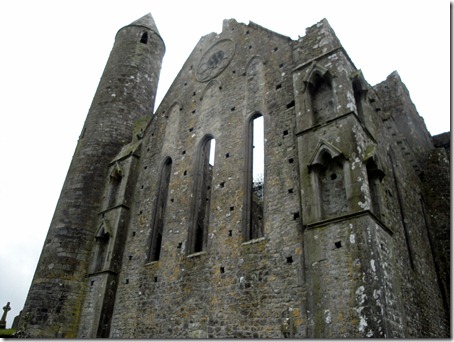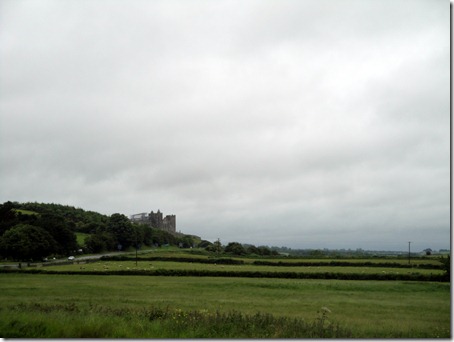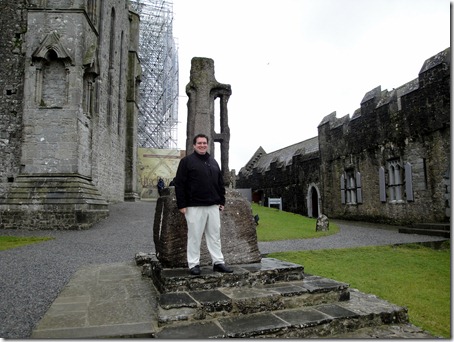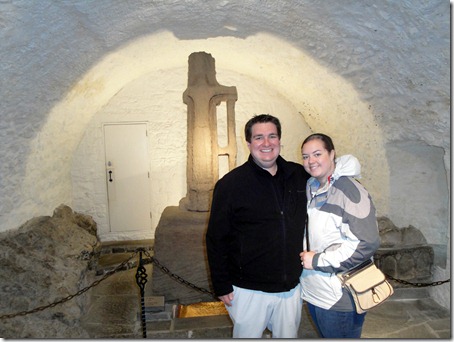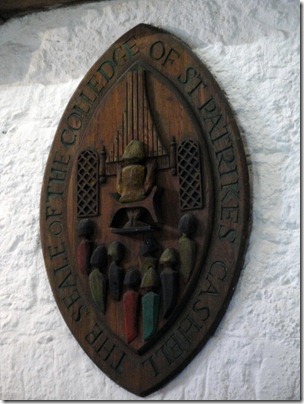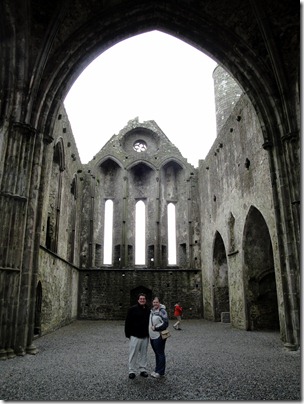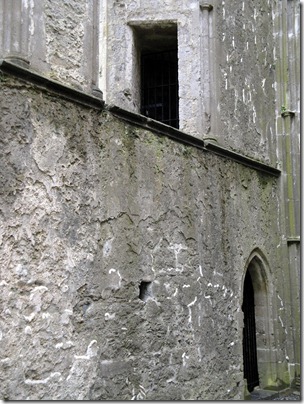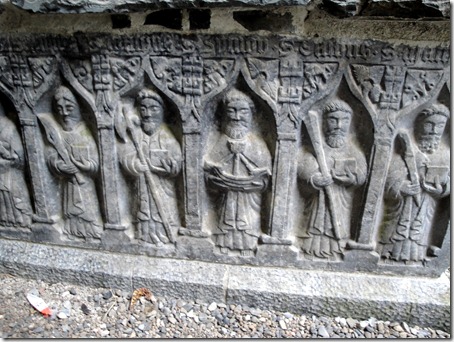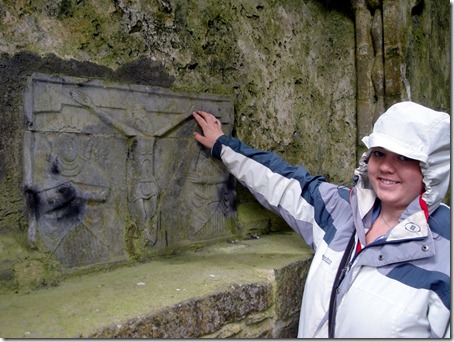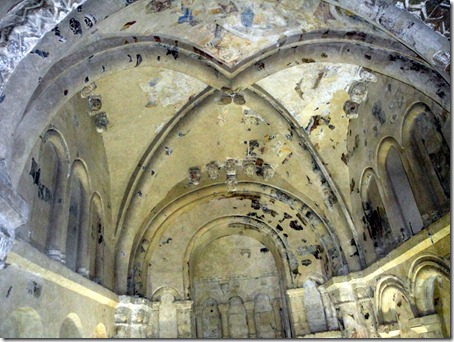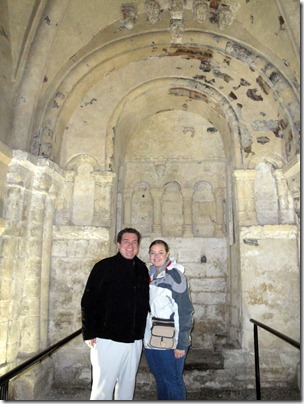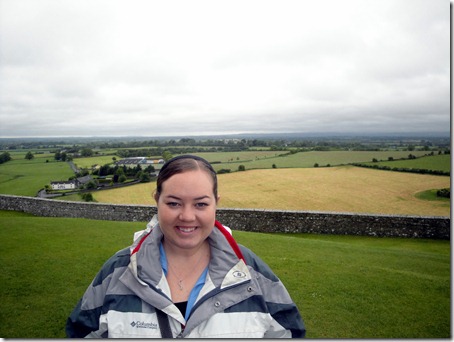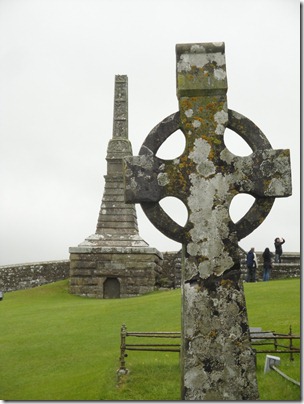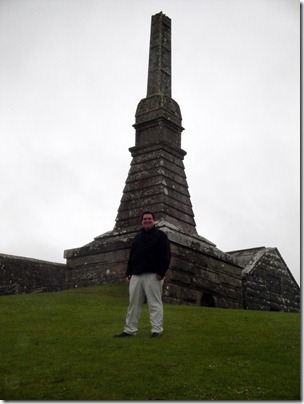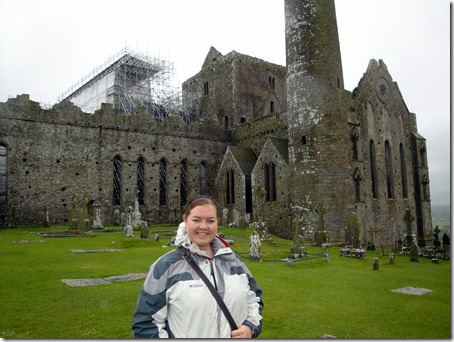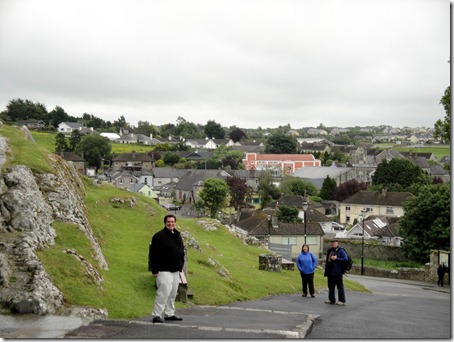I know what you’re thinking when I said we were going to the Rock of Cashel, why would we drive 90 minutes to go see a huge rock? The name is deceiving, as the “Rock” is actually the name of the grounds that these castle/cathedral/fort was built upon. The views were magnificent, and the pictures I got hardly do it any justice..
Driving into the Cashel, you can see the fixtures on the Rock towering over the town. It became apparent why they chose this site all those centuries ago.
At the Rock you had the opportunity to walk around as you wished, but there were also some guided tours available. We managed to jump into one that just started, and it turned out to be the most rewarding experience. Had we not done the tour, I think that we would have taken pictures for 15 minutes and left, but with the context that the tour guides provided, it made everything so fascinating.
First off, the structure that’s there today is actually not the original structure. Originally there were castles there that were constructed out of wood and occupied by kings of Munster. Later on to improve their standing with the Church, the Rock was given to the Archbishop which then built a Cathedral on the grounds – in the 12th & 13th centuries! I thought it was funny because the satirical cynical side of me would say, “I guess these 900 year old structures will have to do.”
One of the names for the Rock of Cashel is “St. Patrick’s Rock”. It gained this name by being the site that St. Patrick journeyed to baptize King Munster. We were told by the guide that during his baptism St. Patrick accidentally drove his staff through the bottom of King Munster’s foot, but Munster thought it was simply part of the baptism and kept his composure.
This is a replica of St. Patrick’s Rock that sits at the original site. The actual St. Patrick’s rock was moved in doors for preservation, as it was constructed by sandstone.
One of the fascinating stories of the Rock was told in the Hall of Vicars, where laymen where appointed by the Archbishop to direct the chants at the Cathedral. They also were provided housing and the Archbishop took care of their living expenses. The picture below is the Seal of the Vicars, which was given to each one of the member. The Vicars could use their seal to place on the bottom of receipts when they bought things from town, then at the end of the year a bill was sent to the Archbishop – basically a 15th century corporate credit card! Apparently the Vicars started to create seals for their family members who then racked up the bill, which brought this perk to an end. As a church choir member, I could appreciate the church putting up living quarters and paying for expenses of their musicians. Too bad the Vicars ruined it for the rest of us.
The interior of the Cathedral, while in ruin, remained impressive. It was amazing to see just how how big it was back then, and all the assorted rooms and corners that were part of the Cathedral. Inside the Cathedral was a series of tunnels that allowed the clergy to move about the upper part of the Cathedral.
The Cathedral was decadent with various carvings that have held up quite well over the centuries.
One of my favorite parts was the Cormac’s Chapel, which second to the tower, is the oldest structure on the Rock. Inside you would see that the ceilings and walls were once painted with murals, which were later covered up by plaster when the Protestants took over the Rock in the later centuries. However you can see the plaster now pulling back and revealing parts of the murals. The chapel itself is currently surrounded by scaffolding, which is being used to preserve the chapel. The chapel was made of sandstone, and apparently the years of the elements have damaged the structure. In order to preserve it, the scaffolding is being used to support a structure that is helping dry out the chapel for the next three years, at which point they will put on a protective exterior shell to prevent the chapel from being further damaged by rain.
Outside of the Cathedral the views were as breathtaking as they were indoors. You could see why the Rock was constructed where it was, as it gave the dwellers an arching view over the lands. We were told by the guide that you can see five counties from the Rock.
One of my favorite pictures was of the Scully Cross, which is actually now that spire in the background of this picture. It used to be a giant famous cross, but during a storm in 1976 it was struck by lightning and the top part of the cross was destroyed.
In the end the Rock was definitely worth the drive up, and is probably on my Mt. Rushmore of favorite sights we’ve seen in Ireland.
We made the walk back down into Cashel and had some lunch at a nearby pub. The town of Cashel itself is pretty similar to the other towns that we’ve seen in Ireland. Because it was Sunday, many of the shops were closed, so we didn’t get the chance to explore the town as much as we would have liked.
We then drove home and relaxed a bit before heading out to Peppers, a pub in Feakle (and yes, we’ve been making bad pun jokes all along), for dinner. There was music playing there, which made it an enjoyable backdrop to eat some fish and drink some Guinness.
